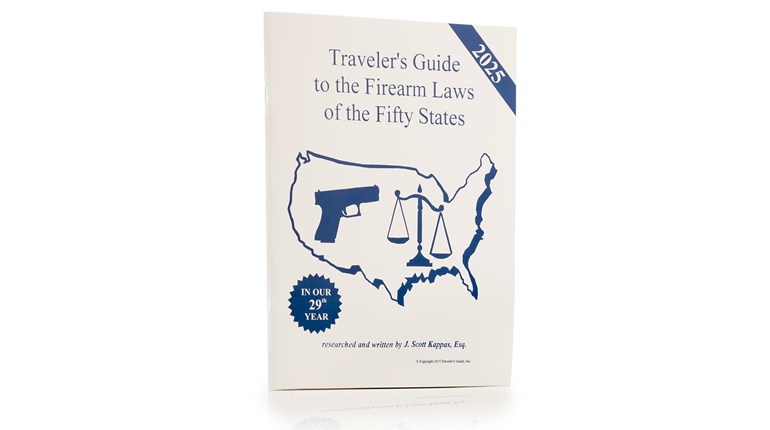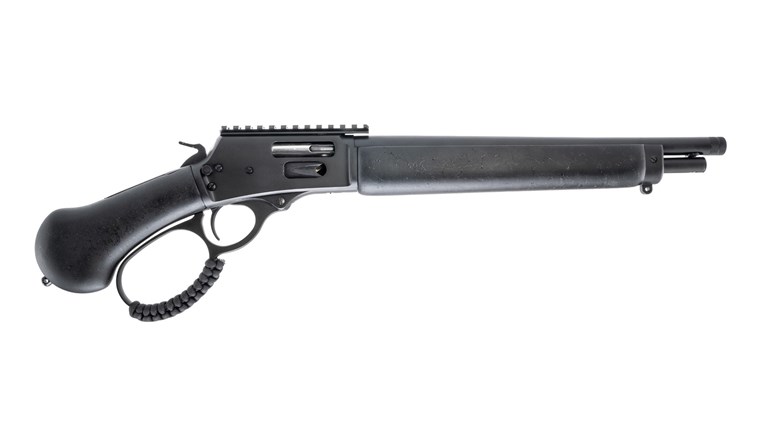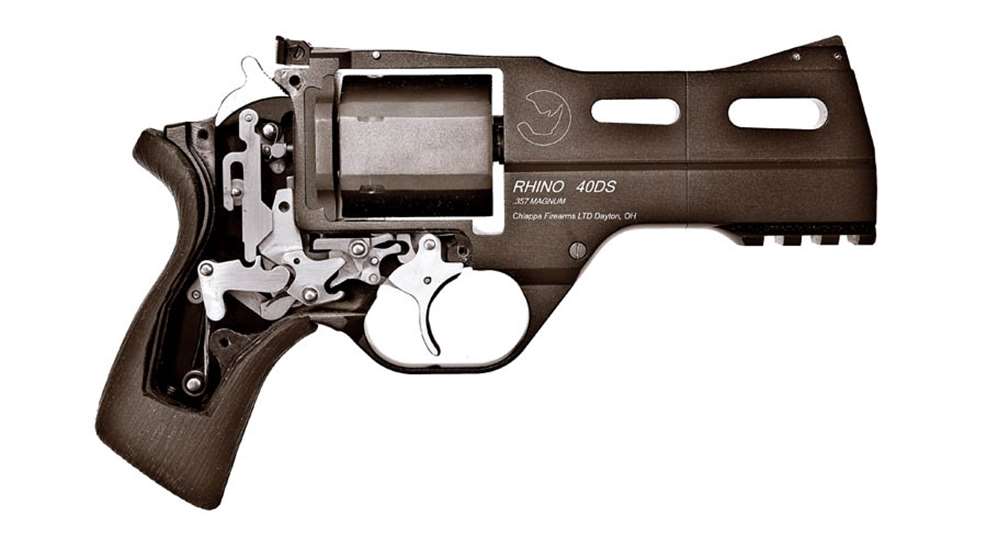
Without getting into a historical debate, the "modern" double-action revolver dates back to the latter half of the 19th century. Although the Smith & Wesson Military & Police, or Model 10, pre-dated World War I, current revolver offerings still bear a striking resemblance. Recent decades have seen some advances in manufacturing technology—particularly the use of exotic lightweight alloys—but the basic design of the revolver has undergone little change in more than 100 years. That is, until Chiappa Firearms came along and turned the revolver world on its head—literally.
The Chiappa Rhino is quite a departure from the traditional revolver. While the Rhino is unique in many respects, all of its eccentricities arise from a single unconventional design principle: this revolver fires from the bottom chamber of the cylinder. In doing so, the Rhino eschews more than a century of established revolver design.
Some readers may not be familiar with Chiappa Firearms. The company was founded in Italy in 1958 and opened a U.S. subsidiary six years ago. Until now, it has been best known for its reproductions of historical firearms. The Rhino is Chiappa's first foray into modern defensive guns. It was developed by Rino Chiappa and based upon a concept originally created by Emilio Ghisoni, designer of the ground-breaking Mateba autoloading revolver, which also fired from the bottom chamber. The Rhino is manufactured in Italy, but all service and warranty work is performed at Chiappa's American facility that is located in Dayton, OH. Chiappa considers the Rhino to be a high-end product, and the company stands behind its guns with a lifetime warranty.
From the Bottom Up
Changing the orientation of the cylinder to the barrel is easy to describe, but difficult to implement. The low position of the barrel requires the revolver's crane to extend around the barrel. The crane detent and ejection rod, therefore, must be on top of the barrel assembly. This dictates a large, solid frame forward of the cylinder, creating a muzzle-heavy, pug-nose appearance.
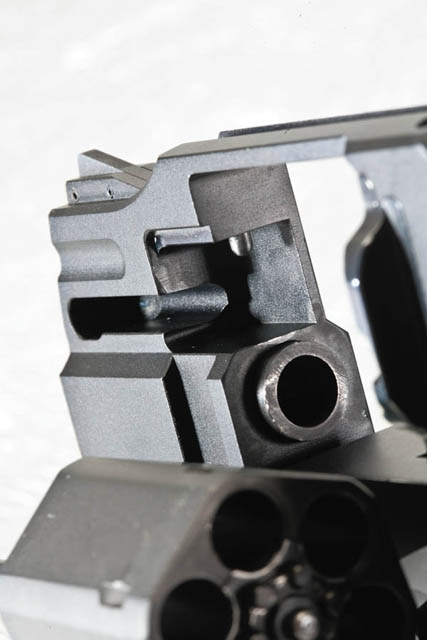
Compressing the distance between the trigger, hammer and firing pin also demands a change in the internal lockwork. The Rhino's hammer is low inside the frame, with its pivot point actually well below the pivot point of the trigger. This requires a significantly more complex mechanism than a traditional revolver design.
The extremely low hammer gives rise to an innovative means of cocking it. In order to fire the Rhino in single-action mode, you must pull down and back on an external cocking piece, which in turn cocks the internal hammer against the mainspring via a series of linked levers. The cocking piece is similar to a traditional external hammer in form and location, but it returns to its original or "down" position against the frame after the gun is cocked. Since the hammer is completely internal, the position of the cocking piece does not indicate the position of the hammer. For this reason, the Rhino has a red "single-action flag" that protrudes from the topstrap when the hammer is cocked. In this case, the indicator is more than just a lawyer-mandated feature—it's the only clear external indication the gun is cocked for a single-action trigger pull.
The Rhino is a six-shot revolver chambered in .357 Mag. and is available with barrel lengths of 2, 4, 5 or 6 inches. The 2-inch Rhino 200DS is clearly designed for personal defense, and my evaluation focused on this model. Although the gun appears chunky, its looks are somewhat deceiving. This revolver is larger than a Smith & Wesson J-frame, but smaller than a K-frame. With an aluminum-alloy frame, the Rhino 200DS weighs 25 ounces and measures only 6 inches in length—a nice size for concealed carry. The ingeniously flattened sides of the cylinder form a rounded hexagon, making the gun thinner compared to traditional revolvers.
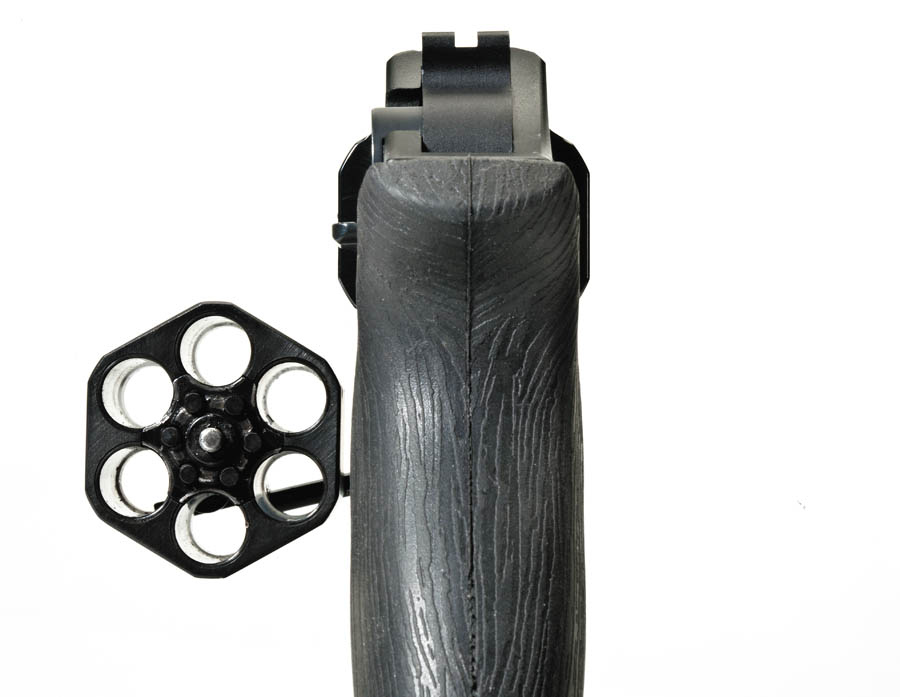
The Rhino's trigger is unusual for a wheelgun. Its double-action pull weight is a hefty 10 pounds, but the trigger's travel is about half of what you would expect. The trigger does not have excessive stacking or any noticeable hitches. It feels heavy, but the pull is smooth and short. The net effect is a manageable trigger well suited to a defensive revolver. Future models of the Rhino 200DS will incorporate an 8-pound trigger, which will make this gun even easier to shoot well.
Its fixed sights follow a standard black-on-black, notch-and-ramp configuration and are large enough for even aging eyes to see. Interestingly, the rear sight blade is formed by the cocking piece, giving this component a dual purpose.
A one-piece synthetic grip is standard on the Rhino 200DS. Although the grip is small, it still provides enough surface area for a firm hold. The synthetic material has some recoil-absorbing properties, but it is not sticky enough to hang up on a cover garment or interfere with a draw from concealment. If you prefer a wood grip, it is available as an option.
Chiappa ships each snub-nose Rhino with a leather pancake holster. Since holster availability may be an issue with this uniquely shaped gun, the addition of a quality belt model is a nice touch. The holster is made in Italy by Radar 1957, and its quality is readily apparent. You can have any color you want, so long as it is light brown. Chiappa decided on a light shade of brown so you could dye the holster a darker color if desired. During testing, the Radar holster served nicely for traditional belt carry under an appropriate cover garment.
Tame Beast
My range testing took place over a number of days, expending about 600 rounds of .38 Spl. and .357 Mag. ammunition. The Rhino 200DS functioned very well, with no serious issues. After a few hundred rounds, I noticed some difficulty in extracting spent magnum cases from the cylinder, but a quick cleaning resolved this problem. The Rhino is well built, perhaps overbuilt in many respects, and I expect a long service life.
The low bore axis and high grip of the Rhino are designed to reduce felt recoil and muzzle flip. Mission accomplished. In fact, the perceived recoil of most .357 Mag. loads I fired during my range sessions felt like.38 Spl. loads fired from a traditional revolver. The Rhino tended to recoil straight back into my shooting hand and arm, rather than levering up and back like a top-barreled revolver. This helped the recoil feel much more tame and dramatically reduced muzzle rise.
For comparison, I shot the same ammunition I used for testing the Rhino 200DS through one of my favorite revolvers—a Smith & Wesson Model 65 with a 3-inch, heavy barrel. Despite the increased weight and longer barrel of the Model 65, every load was far more comfortable when fired from the Rhino. And while the recoil of .357 Mag. rounds would cause the Model 65's sights to rise above the target—and even over the berm behind it—the Rhino's sights would stay within the boundaries of a silhouette. That degree of reduction in muzzle rise is remarkable.
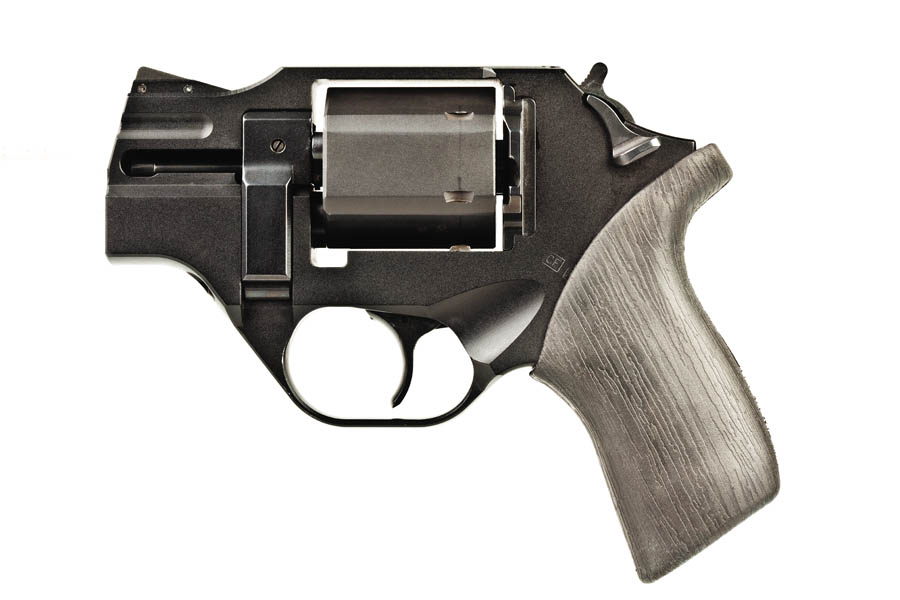
Hot .38 Spl. +P loads were actually pleasant to shoot, with minimal felt recoil. More importantly, full-house .357 Mag. loads were also quite easy to shoot. In fact, the loud blast and muzzle flash I experienced with the magnum loads seemed out of place when matched with the mild recoil. Only the very hot loads pushing a 158-grain bullet more than 1,000 fps felt uncomfortable from the Rhino.
There is no doubt this gun will be a boon to recoil-sensitive shooters who want to carry a magnum revolver. Even if recoil doesn't bother you, the reduced muzzle rise makes follow-up shots faster with the Rhino than with traditional revolvers. All of this translates to a revolver that is easy to shoot, and even shoot fast.
The Rhino 200DS is extremely accurate for its intended use as a defensive revolver. Shooting offhand at 15 feet produced an average group size of less than 1 inch with single-action firing. And despite the elevation difference between the sights and the bore axis, I was pleased to find the shots to be dead-on at that distance. In fact, I found the sights to be regulated for a proper point of impact at distances ranging from10 feet to 25 yards.
Considering Change
There are a few adjustments shooters will need to make with the Rhino. First, you must be careful to grip the gun properly, keeping your thumbs away from the front edge of the cylinder and the barrel/cylinder gap. Other revolvers are more forgiving because the gap is on top of the cylinder, but the Rhino will surely singe flesh with hot expanding gases if you get your thumb too close.
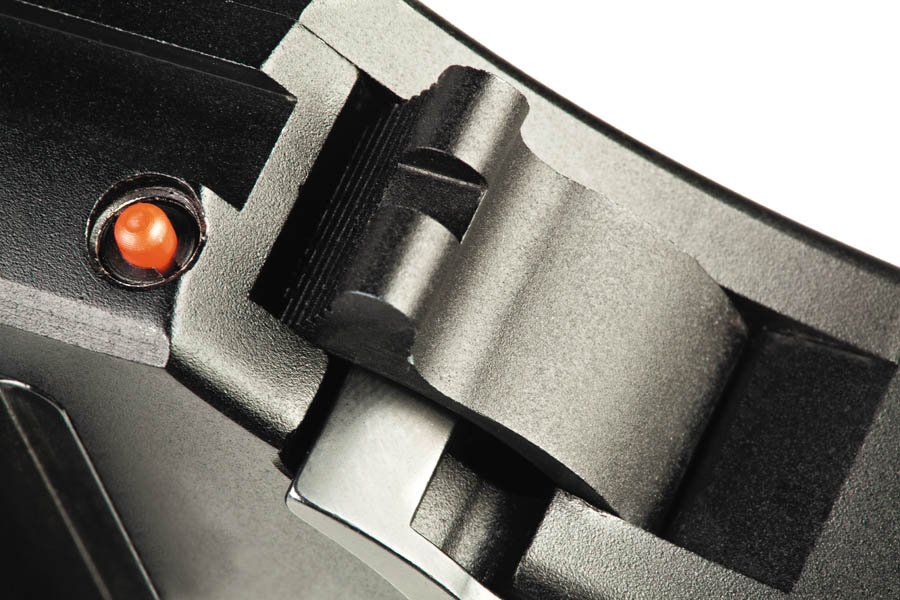
The hammer is difficult to cock for single-action firing. Shooters may need two hands to apply enough pressure to the cocking piece. The Rhino design has a mechanical disadvantage in the cocking process, which means a lot of force is required to thumb the cocking piece back and set the internal levers in motion.
Reloading the Rhino is done in the traditional manner, but with some notable changes. For example, the cylinder-release latch—which is mounted near the top of the frame adjacent to the cocking lever—travels down rather than forward. And, if you are performing a partial reload, you need to remember the next round to fire is at the 4 o'clock position instead of 2 o'clock. The differences in the manual of arms for the Rhino will require a period of familiarization for experienced revolver shooters. After a few decades of shooting revolvers, I needed a little time to adjust.
Many who look at the Rhino will comment that the gun is ugly. After range time with this revolver, I don't agree. Is the gun unusual? Yes. Something outside the box? Definitely. If you are a strict traditionalist, the Rhino may not be for you.
But, the odd appearance of the Rhino is a commitment to function over form. Chiappa cast aside existing notions of how a revolver should look in favor of how a revolver should work. The excellent handling characteristics and recoil management of the Rhino provide strong evidence for the case that Chiappa has truly reinvented the revolver.
As with any new and drastically different product, it will take some time to see how well the Rhino will be accepted by the shooting community. Given the advantages of the Rhino's design over traditional revolvers, I believe forward-thinking shooters will make the leap. My experience with Chiappa Firearms has convinced me the company is committed to this market and to ensuring the Rhino family of revolvers will thrive in the United States. All of that sounds like a formula for success, and I look forward to seeing how the Rhino evolves. In a few years, I think the Rhino's upside-down design will seem quite normal and we will wonder: why didn't anyone build this before?
Manufacturer: Chiappa Firearms; (937) 835-5000
Action Type: Revolver
Caliber: .357
Mag.Capacity: 6 rounds
Frame: Aluminum-alloy with blackanodized finish
Cylinder: Steel
Barrel Length: 2 inchesRifling: 6 grooves, 1:19-inch RH twist
Grip: One-piece, black synthetic
Sights: Fixed; front ramp, rear notch
Trigger Pull Weight: 5.2 pounds single-action, 10 pounds double-actionLength: 6.5 inches
Width: 1.4 inches
Height: 4.9 inchesWeight: 25 ounces
Accessories: Leather pancake holster, cleaning rod with nylon brush, owner's manual, hard case
MSRP: $749













